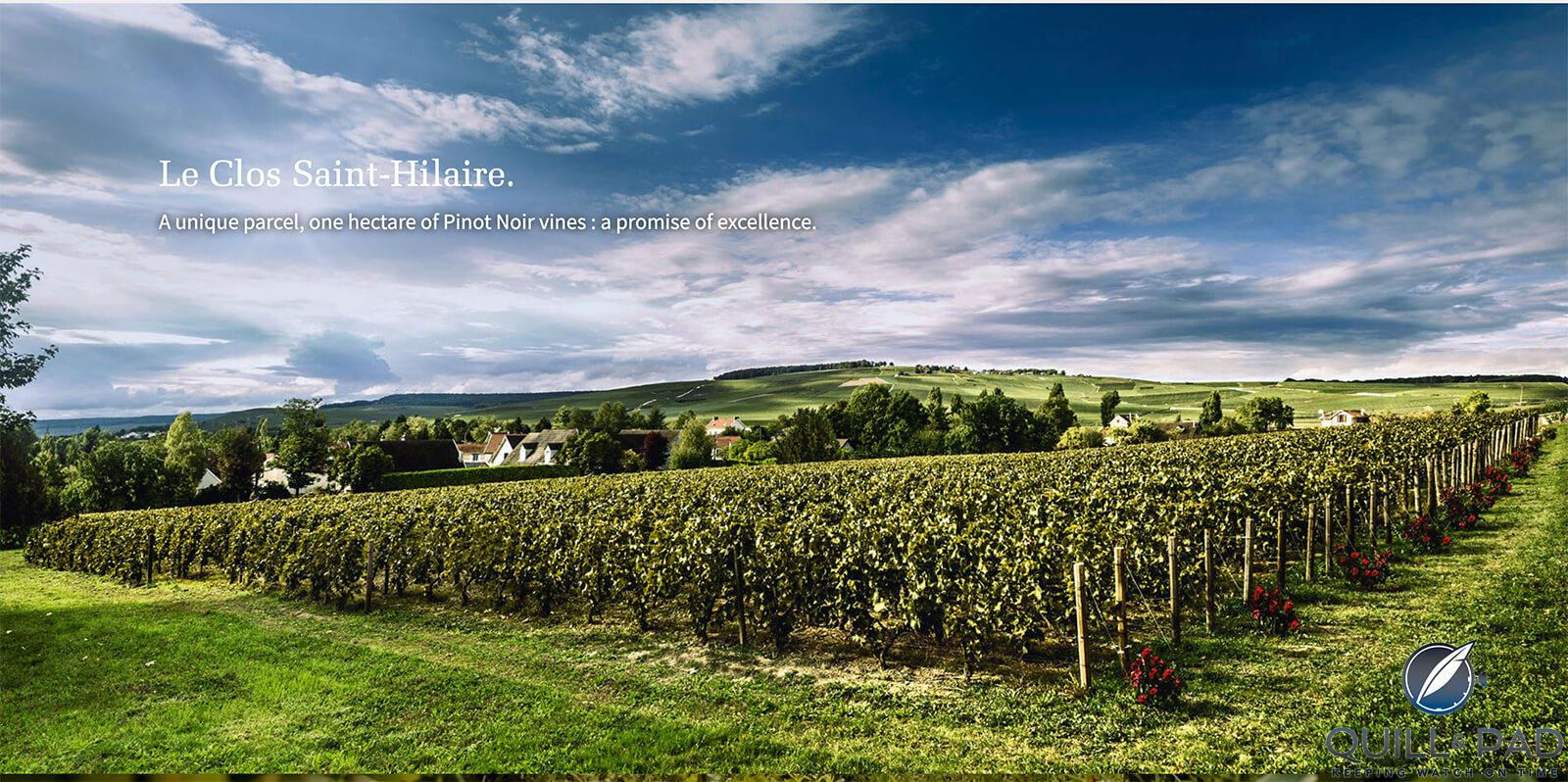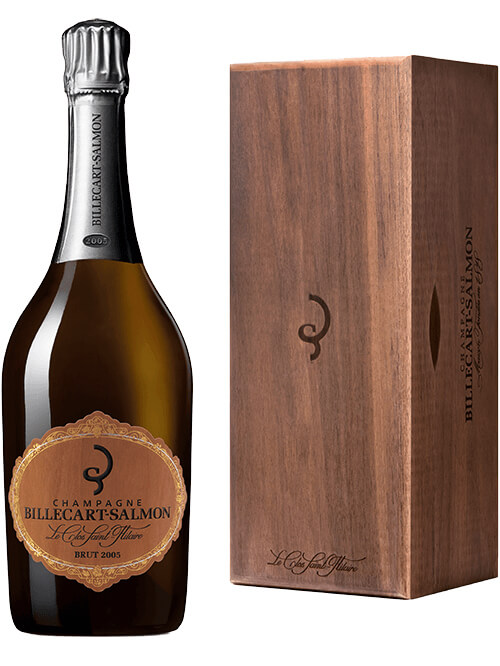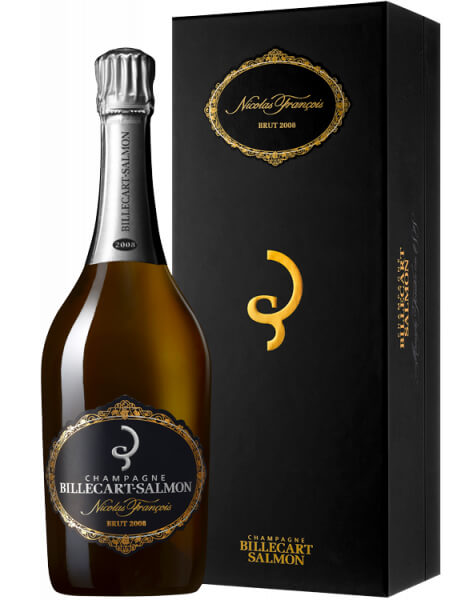————————————————————————————————–

Billecart salmon Le Clos Saint-Hilaire
Le Clos Saint Hilaire is a Blanc de Noirs (100% Pinot Noir, vinified in oak barrels and then spent 14 years on the lees. It comes from one hectare of vines planted in the former park of the family estate in Mareuil-sur-Ay. Low dosage. It has been produced since 1995, although in tiny quantities, usually around 3,000 bottles.

Billecart salmon Le Clos Saint-Hilaire
With this Clos, the Billecart team relies on biodynamics, which they want to expand to all vineyards. For many, Le Clos Saint-Hilaire is the best Blanc de Noir produced in the region, although Krug and Bollinger may want to challenge this.
Cuvee Elizabeth is an outstanding rose that was first created in 1988. It is a blend of 50% Pinot Noir from Montagne de Reims and the Grande Vallée de la Marne and 50% Chardonnay from the Côte de Blancs.
Cuvee Nicolas François was first created with the 1955 vintage, although it was not called that until 1964 (so the 1964 vintage is considered the first release). A 60/40 blend of Pinot Noir from Montagne de Reims and Vallee de la Marne (Ay, Verzenay and Mareuil-sur-Ay) and Chardonnay from the Côte de Blancs (Mesnil, Chouilly and Cramant), the usual production is in the Close to 50,000 to 60,000 bottles, not much for a thirsty world.

Billecart salmon cuvée Nicolas François
Typically, partial malolactic fermentation occurs and the wine is aged on the lees for at least a decade.
The 2008 vintage consists of 83% Grand Crus and 17% Premier Crus. The dosage is only 2.9 grams/liter. 17% was vinified in oak barrels. This vintage enjoyed more than twelve years on the lees. What is interesting is that the dosage for this wine is now significantly less than half of the dosage used in wines such as 1975 and 1986. As is usual at Billecart, each plot is vinified individually.
The must is settled and clarified not once but twice and then cooled to 5°C. The coarse yeast is removed and the wine is allowed to warm slightly to begin fermentation. In 1959 and 1961 fermentation took place in barrels. This was stopped but reintroduced in the 1990s (1998).
Cuvee Nicolas François is only released in top vintages, although conditions allow this to happen far more frequently than in the past. After the famous trio of 1988, 1989 and 1990 came 1991, a year that was released by very few houses.
The house has brought this wine onto the market in every vintage since 1995, except 2001 and 2003, 2004 and 2005, and most recently 2008.
The house experimented with blocking malolactic fermentation in 1990 and took it a step further in 1998. This was also the first vintage to include a small percentage of barrel fermentation (5%) after the house switched to stainless steel in the 1960s. With the 1998 vintage, the yeast storage time began to be extended and the dosage reduced.
Readers will be under no illusions about how highly I value the 2008 vintage in Champagne. For me, 1988 and 2008 are the greatest vintages of the last forty years. This is believed to be the very last release of a 2008 Champagne, other than the late disgorgement Champagnes. Don’t miss it.
————————————————————————————————–


